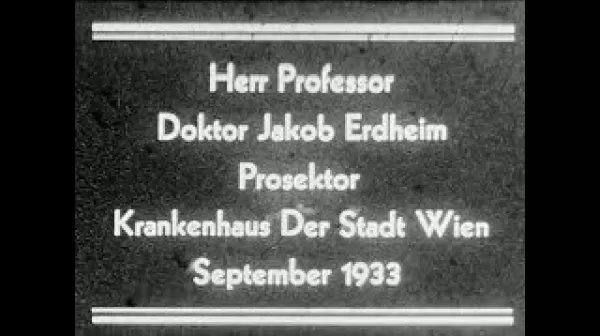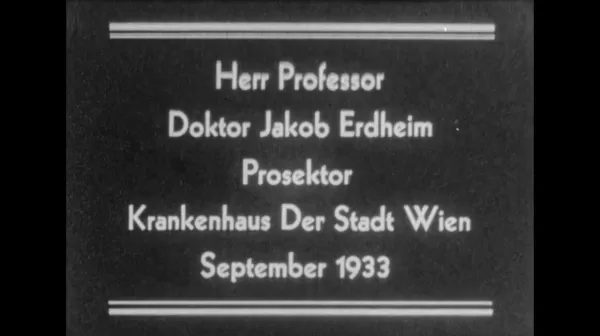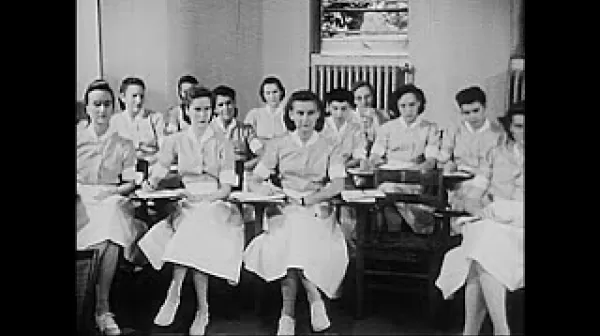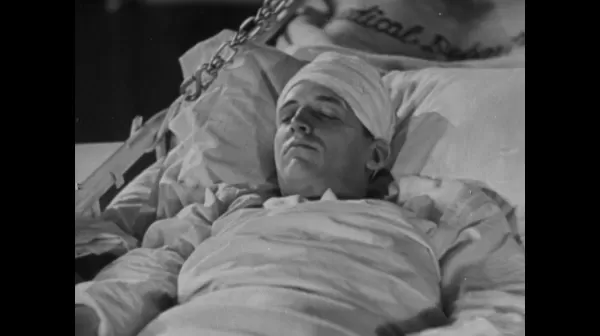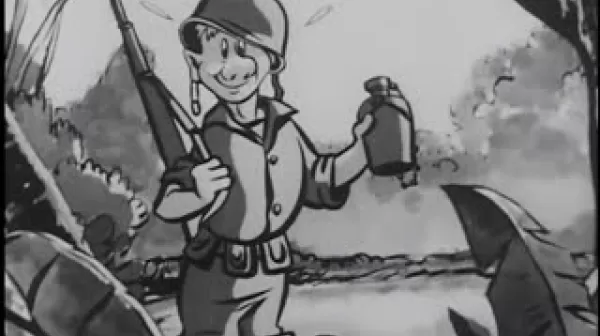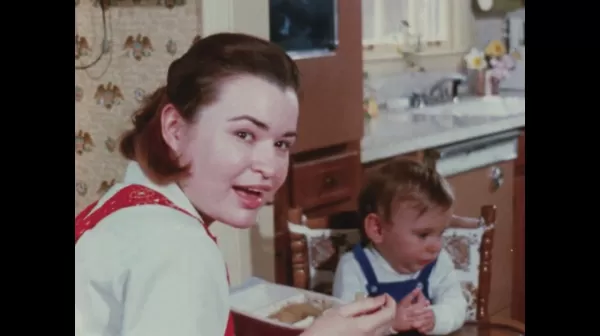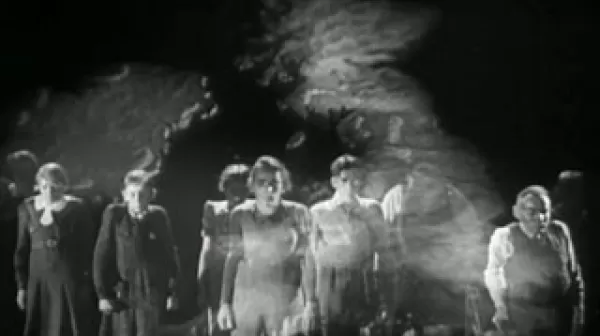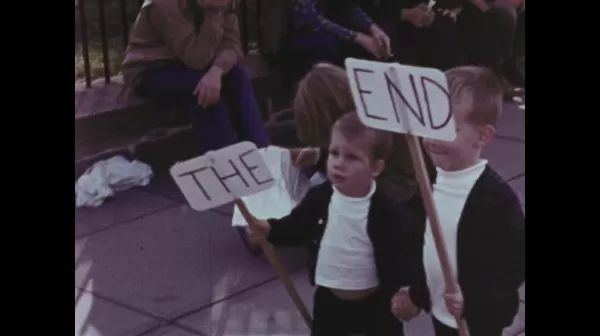Herr Professor Doktor Jakob Erdheim [Silent] (Producer unknown, 1933)
Shots include: the exterior of Krankenhaus der Stadt Wien (Vienna) ; people on the pavement and automobiles on the street in front of the hospital; group of white-gowned men around an autopsy table; gowned, gloved man at a side table cutting up a specimen; Y-shaped incision is made on the cadaver and two sets of gloved hands begin to dissect the chest; the ribs are cut and the ribs and sterum removed; the thoracic contents are cut free and removed from the cavity; the prosector, wearing an apron and gloves, examines the lungs; the flayed scalp is minutely examined; the prosector taps on the

